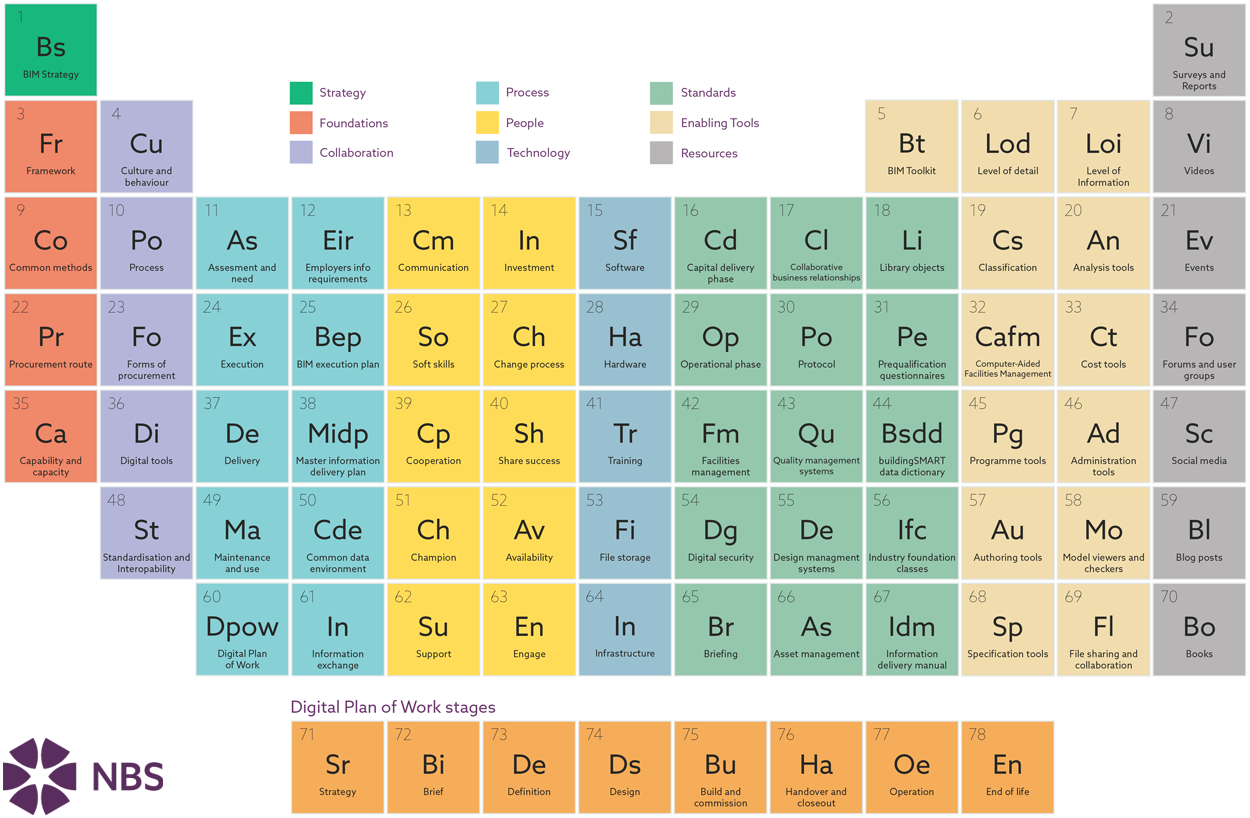
NBS’s Periodic Table of BIM is an interesting way to visualize steps that are necessary to a successful BIM implementation.
Inspiring by the periodic table of elements, the NBS’s table presents the important elements of BIM in way easy to visualize and nice to keep as reference.
Please find below how the table is structured in groups:
Strategy
Define a BIM strategy and understand what are the specific needs where this strategy is to be implemented. What are to be achieved with the BIM implementation?
Consider how and when the strategy will be implemented – and the supporting foundations, processes, technology, tools and people is required.
Foundations
Build foundations of efficient systems for communication, information exchange, and data transfer, to underpin advanced BIM processes.
Create an approach for managing the production, distribution, and quality of construction information and consider the right procurement route that will set the appropriate environment for collaboration.
Analysis of the current BIM capability and capacity to determine the organization BIM readiness status and establish the practical changes that might be required in the future.
Collaboration
Create and develop efficient ways of working and on collaboration.
In order to benefit from coordinated information, digital tools must be consider to allow effectively collaboration also it might required behavioural changes towards the new process to increase adoption rate.
Process
To consider how and where improvements can be made on current processes.
By understand what a best-practice workflow looks like and ensure that information is universally structured independent of its authors.
Understand information requirements during the whole project life cycle so that best value is achieved through the whole project time line.
People
People are an element of a BIM strategy which is often overlooked.
Provide clear communication to the people involved as to why and how the BIM implementation will take place and gain support by engaging BIM more enthusiastic resources on the operational level, as well as getting support from senior management.
BIM implementation requires changes in processes, the organization has to make sure that success are share among the team and support and training are provided individually in case that’s necessary.
Technology
Ensure that the organization have the right technology, software and hardware, to support your BIM aims and objectives.
As the organization moves into a digital environment, consider how and where data is stored and the best way to share and publish information in a security minded way.
Standards
Evaluate the standards, procedures and supplementary documents available to the organization that will assist with the strategy and help achieve collaborative BIM.
An increase number of countries around the globe are embracing BIM either as a top-down approach such as mandating BIM at a government level, or a bottom-up approach such as a demand from the supply chain. This trend shows no sign to be slowing down.
Enabling Tools
Consider the enabling tools that will help design, develop, deliver, and maintain the built asset.
The organization may require a number of different enabling tools for specific tasks and functions.
Before an investment is made, tools that are available to for free must be analysed.
Resources
Make use of access to information by considering what resources are available to within the organization.
The internet and social media have created a valuable online community of support.